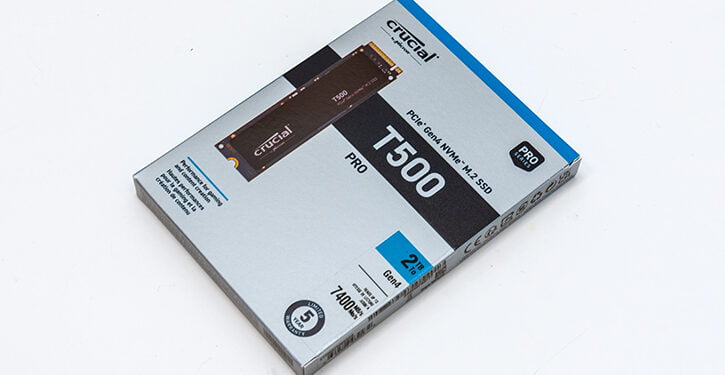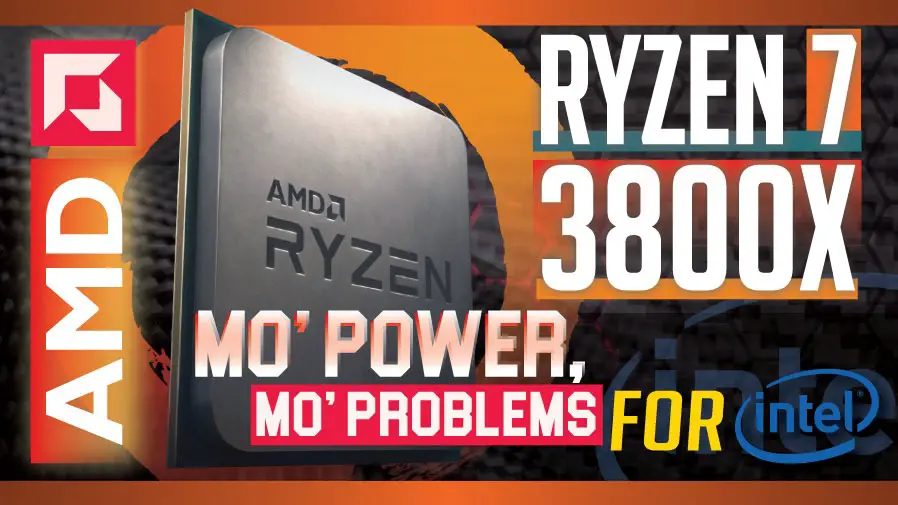Final Score : 90 out of 100
Before we start, we must admit that the transition from “last generation” PCIe 4 x4 to next generation PCIe 5.0 based storage devices has gone slower than expected. After all, when PCIe 4 x 4 drives hit the scene, it did not take SSD manufactures all that long to enact a ‘trickle down’ approach which quickly pushed PCIe 3.0 models to the value end of the marketplace. However, with multiple excellent PCIe 4.0 controllers recently released it is not too surprising that PCIe 4.0 is going to be sticking around for quite some time. This goes double when this new breed of ultra-powerful, and yet also extremely power efficient controllers are paired with cutting edge NAND. So if you are not interested in PCIe 5 performance levels, be it due to heat/power/price concerns, the T500 is pretty hard to beat on both a performance and bang for your buck perspective. As such, if you can afford the 2TB capacity option you can stop reading right here. The 2TB T500 Pro is the better drive. Buy it. Enjoy it. Don’t be bothered to second guess your decision over 1TB vs 2TB T500 models. Conversely, if the 2TB is just too far outside your budget, buy the 1TB T500 Pro and don’t worry about the lost performance… as it too is a great mainstream M.2 SSD.
For those that want a deeper understanding the reason the T500 Pro 2TB is the better option is not entirely due to being able to fully saturate the channels with enough NAND dies. Yes. On paper it is a night and difference in write IOPS. Yes, this difference is due to the T500 2TB having literally twice as many dies’ worth of that excellent 232-layer R.G. TLC NAND on each channel. This typically is why 2TB have been faster than 1TB. However, the T5000 1TB capacity variant really, really comes close to fully satisfying this controller’s needs/wants/desires. That is why the real-world results are so much closer than the paper spec’s would lead you to believe.
This divergence between theoretical and reality is because the Phison E25 is on odd duck. In an era of 8 channels starting to not be enough and serious consideration being place on moving to 16 for the next gen Phison controller… the E25 trucks along with only four internal channels needing to be populated with NAND dies. Furthermore, the channel ‘width’ the E25 is using is not really that much wider than what this new breed of B58R 2400MT/s NAND can do – 3600MT/s vs 2400MT/s. Thus it really does not take much to fill it.
The T500 design is also a bit odd and does buck the trend of opting for twice the number of NAND ICs for the 2TB versus the 1TB. Typical manufactures just populate the secondary side of the PCB and call it good enough when ‘upsizing’ from 1TB to 2TB. They do so as it means only needing one large contract instead of two smaller contracts with Micron/Kioxia/SK Hynix/etc. Which also means less logistics headaches of only dealing with one NAND IC. By the standards of the industry… the T500 is odd. Odd in that instead of doing the “sensible” thing Micron has lavished the much, much more expensive 8Tbit/1TB NAND ICs on the T500 2TB… and kept it a single sided device. This ease of installation / external cooling that M.2 2280-S models inherently have over their -D brethren sadly also mean that the 2TB is just as bottlenecked by Phison’s emergency block erase algorithm(s) as the 1TB capacity option… as all the r/w requests from the controller are being funneled through two NAND ICs worth of CuA circuitry. Not the usual/typical/(…expected by Phison’s design team) four.
This is why the majority of the extra performance the 2TB boast stems mainly from having twice as large a pSLC cache buffer, and twice the capacity of RAM cache on the PCB. As such the 2TB T500 is not massively faster than the 1TB until the pSLC is getting close to being exhausted. With a 20percent floating buffer the 1TB’s pSLC cache is going to be big enough for most day to day tasks. Not all… but most. Thus, the most theoretical differences between the two capacity options are only going to become noticeable when you routinely go above the abilities of the 1TB T500’s pSLC buffer. Make no mistake the 2TB is faster. It stays fast noticeably longer than the 1TB. It is even, at the very least, twice as durable. It however should not be chosen over the 1TB if performance is your paramount concern. Both capacity models are PCIe 4.0 based M.2 2280-S2 drives and the “I have a need, a need for speeeeed” buyers have a plethora of faster, PCIe 5.0 models to choose from – including both the EOL’ed Crucial T700 Pro and new T705 Pro. So, while the T500 Pro 2TB is the better drive of the two, if you can not afford the added cost (and can live with having half the capacity) do no feel bad about having to opt for the 1TB capacity option. The T500 Pro series is just that good, and that flexible a mainstream SSD series. So good that it makes such worries… minor at best.

The Review
Crucial T500 2TB
The T500 Pro SSD series offers excellent performance, with the 2TB model outperforming the 1TB due to its larger pSLC cache and RAM capacity. However, the 1TB variant still provides strong performance for most everyday tasks. While the 2TB model is faster and more durable, budget-conscious buyers will find the 1TB T500 Pro to be a highly capable mainstream SSD.









